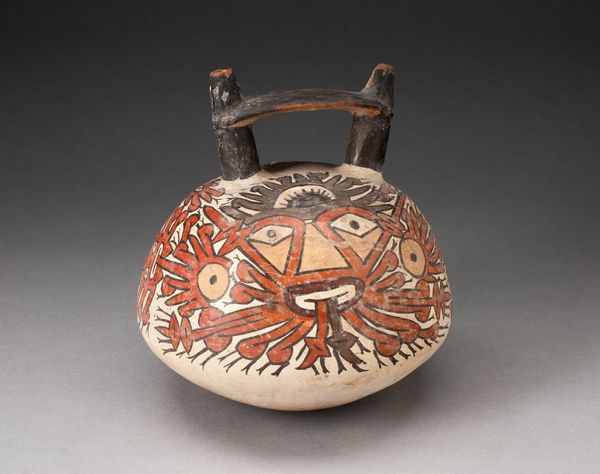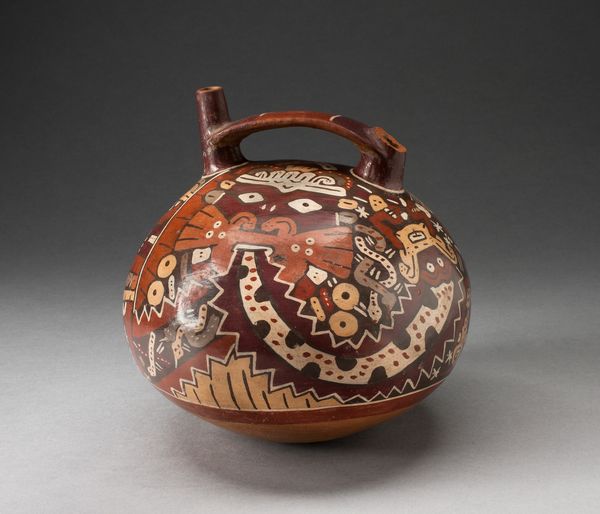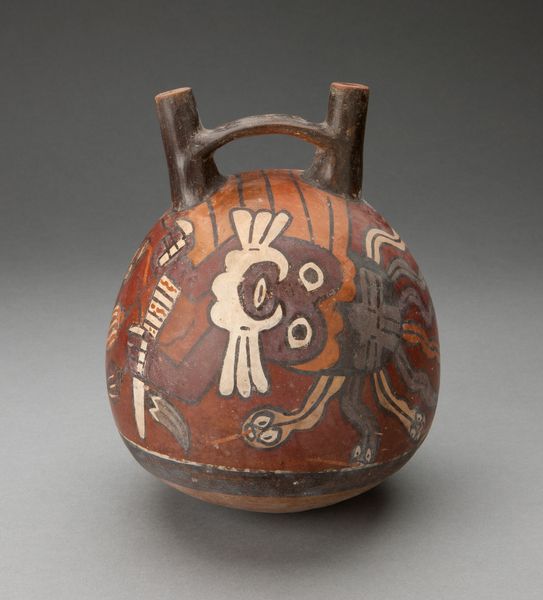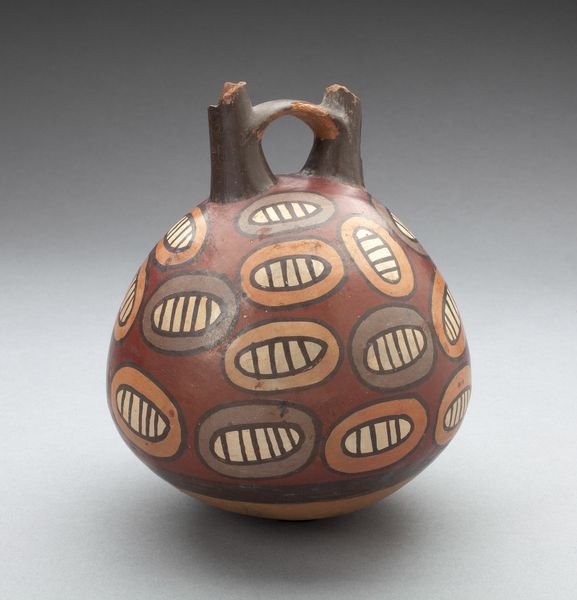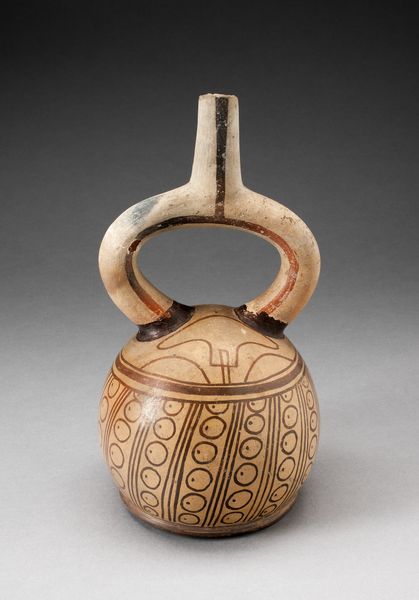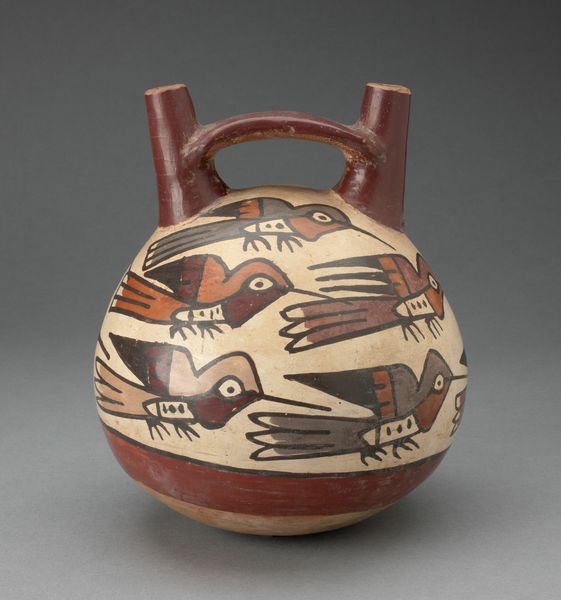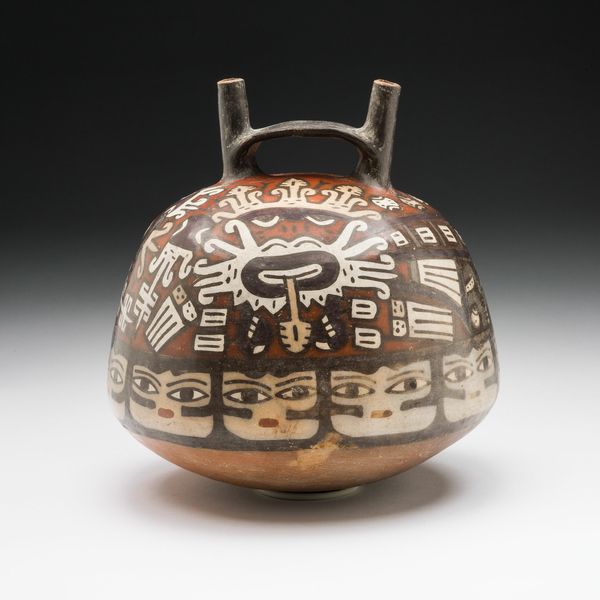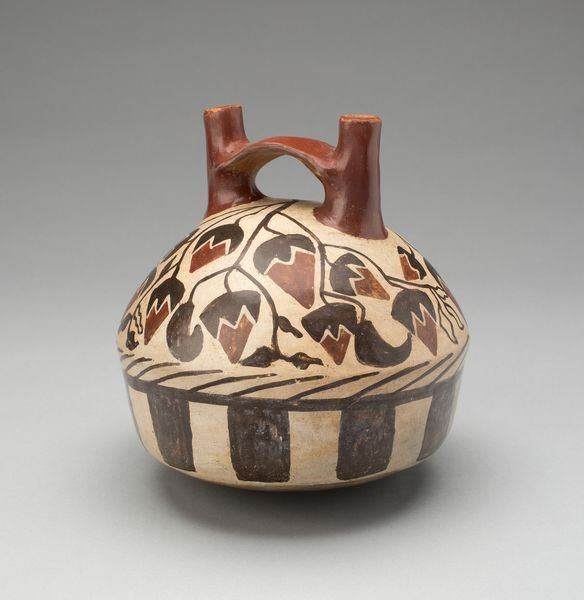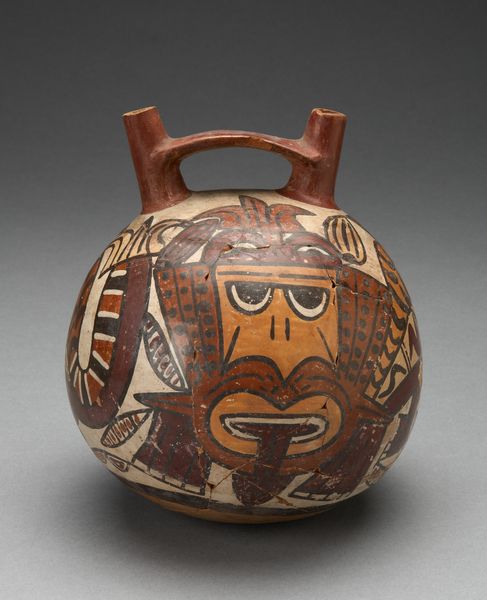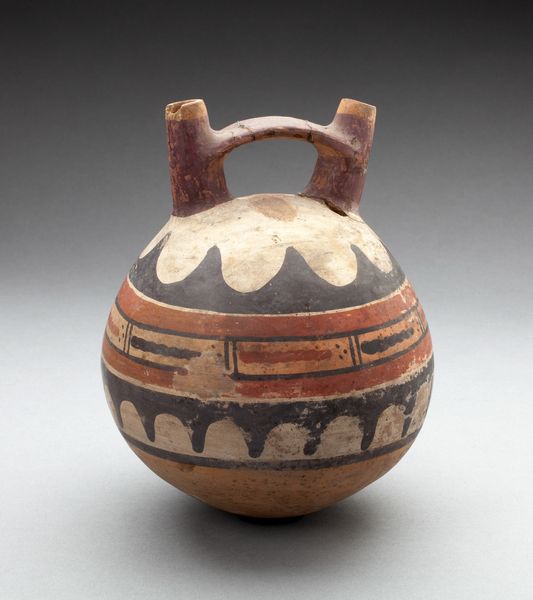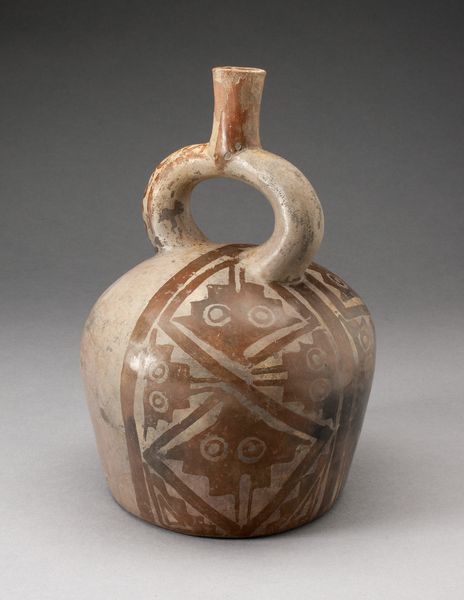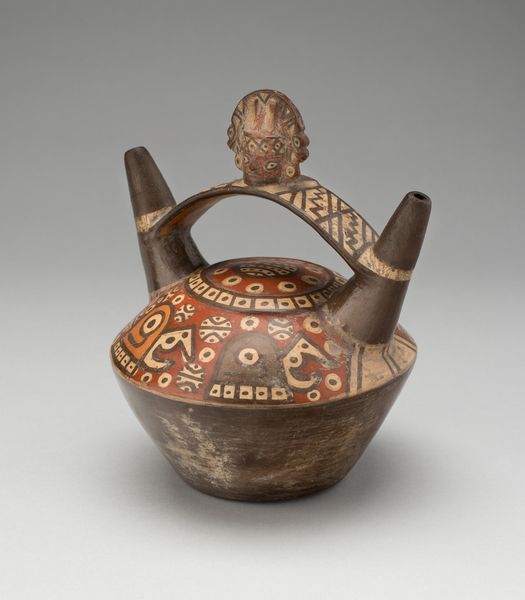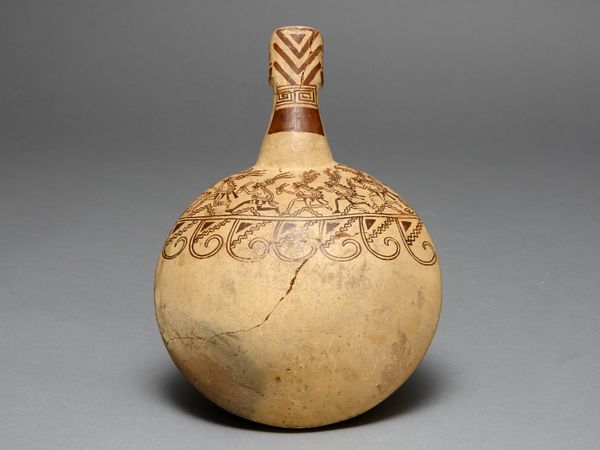
Double Spout Vessel Depicting Costumed Figure with Intricate Abstract Mask c. 180 - 500
0:00
0:00
ceramic, earthenware
#
ceramic
#
figuration
#
earthenware
#
ceramic
#
indigenous-americas
Dimensions: 20 × 19.7 cm (7 7/8 × 7 3/4 in.)
Copyright: Public Domain
Curator: The piece we are examining today is a ceramic double spout vessel by the Nazca people, crafted between 180 and 500 CE. Notice how the artist has rendered a costumed figure with a particularly elaborate mask. Editor: My initial impression is one of controlled frenzy! The limited palette intensifies the overall dynamism of the interlocking abstract and figural elements. Curator: Absolutely, the tight compositional structure, almost like a carefully constructed algorithm, is what defines the aesthetics of this piece. Observe how the curved vessel dictates the patterns, as the mask expands, stretches, and then condenses as it wraps around the object's form. Editor: Yes, but beneath that formalism, I sense layers of hidden meanings. Masks, particularly those used in rituals or ceremonies, are never mere decoration. Here, this mask likely serves as a threshold. The person who dons this is becoming something beyond themself – a conduit for another force. Curator: That reading could certainly hold given that the Nazca civilization was based in what is now a hyper-arid region of Peru, which had an apparent influence on the Nazca worldview, evident across all their art forms. Water scarcity meant rituals and supplication became essential cultural events to maintain any control over their material circumstances. Editor: This helps explain the zoomorphic features woven into the masked figure as it morphs into other aspects of the natural environment; look at how the stylized birds’ wings frame the figure, maybe pointing towards a guardian spirit of the skies and a wish for rainfall. And note how the geometric motifs along the base almost represent rows of teeth… hinting at an earthly counterpart that might control the flood. Curator: Note too, the careful chromatic layering—how the reddish-brown defines the outer structure, while a lighter buff shade establishes a clear field of inner symbols within the central mask. It's an astute system to maximize both distinction and unity across such a compact surface area. Editor: Ultimately, the vessel encapsulates both a human face and a collection of deeply rooted cultural desires. By looking at these enduring, evolving symbolic features, we gain access to a worldview shaped by environment, faith, and creativity. Curator: Indeed. Its formal brilliance lies in harmonizing structure with symbolism, making us rethink how a single plane of a ceramic artifact manages such intricate visual tension.
Comments
No comments
Be the first to comment and join the conversation on the ultimate creative platform.
